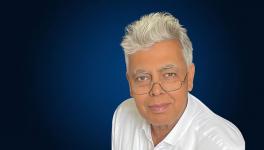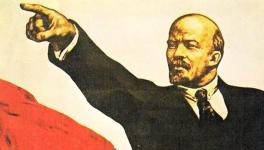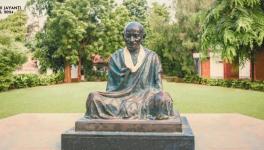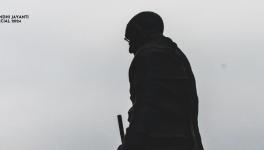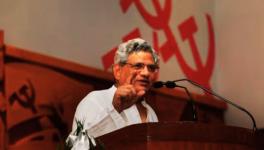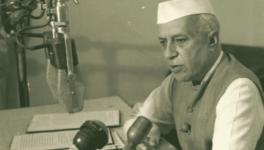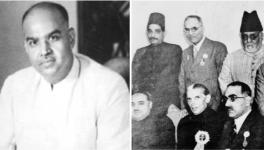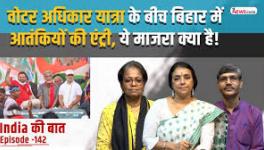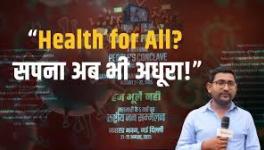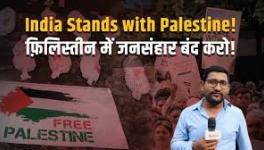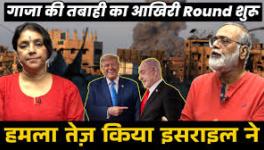When History Forgets Its Own!

Image Courtesy: wikimedia commons
In August 1942, as the Quit India movement swept across the country, three young men in Erode made choices that would land them in colonial jails and, decades later, expose the fault lines in how independent India remembers its past. E.S. Ramasamy was 19, from a farming family. S.V. Muthu ran a barbershop he had boldly named "Bharatha Matha Saloon." A. Pappanasari worked in telecommunications. None would find their way into mainstream history books, yet their stories reveal more about the real character of the freedom struggle than many celebrated accounts.
What happened to these three men-and thousands like them-challenges the sanitised version of independence that reduces a mass movement to the actions of a few great leaders. More troubling still is what happened after 1947, when their continued fight for social justice marked them as inconvenient reminders of promises unfulfilled.
The Lash and the Law
When the British dropped the pretense of constitutional governance in response to 1942, the violence was swift and systematic. Ramasamy did not just face imprisonment under the Defence of India Rules, he was sentenced to 30 lashes, a punishment that laid bare the brutality beneath colonial "law and order." The teenager was then transferred from Erode Sub Jail to Alipuram Central Jail, part of a calculated strategy to isolate political prisoners from their communities.
Muthu's crime was running a gathering place where people could talk politics over a haircut. His participation in sabotaging communication lines near Chidambaram Park earned him six months and 20 lashes--the British understood how dangerous such grassroots networks could be.
Pappanasari's telecommunications sabotage in Chithodu was part of a sophisticated strategy to cripple the coordination mechanisms that held the empire together. All three ended up in Alipuram, where the colonial authorities' careful record-keeping would later become evidence for their recognition as freedom fighters -- an irony the British bureaucrats never anticipated.
The concentration of political prisoners backfired spectacularly. Jails designed to break spirits became spaces where young activists educated each other about more than just independence. They began to understand the social order that colonialism protected, and why replacing British administrators with Indian ones might not be enough.
After the Flag Came Down
This is where the official story gets uncomfortable. All three men joined the Communist Party of India after Independence, a choice that mainstream nationalism has never known how to handle. For men who had experienced State violence firsthand, the decision was not betrayal but logic. They had seen how power worked, and they were not convinced that changing the colour of the uniform would change its essential character.
Tamil Nadu in the 1940s was already politically charged. Periyar's Self-Respect Movement had been challenging hierarchies for decades. The emerging Dravidian political consciousness was asking hard questions about whose independence this was. For activists who had already risked everything once, the Communist Party offered a framework to understand why the promises of 1947 were not being kept for ordinary people.
In post-Independence Erode, their activism focused on working-class rights, social equality, and economic justice-precisely the issues that the new nation's leaders preferred to defer. This was not a departure from their freedom fighting; it was where the freedom struggle logically led if you took seriously its egalitarian promises.
The Awkward Heroes
The Indian state's relationship with such histories has always been complicated. In 1972, during the Silver Jubilee of Independence, all three received the Tamra Patra, official recognition as freedom fighters. The timing was telling: 25 years later, when their radical edge had presumably been blunted by age and institutionalisation.
This belated recognition revealed a deeper problem. While the state celebrated patriotic sacrifice in the abstract, it systematically marginalised those whose post-Independence politics challenged inherited structures. Revolutionary activists became pensioned patriots, their radical implications safely neutralised.
The gap between recognition and reality reflects how Independent India has constructed its historical memory. Whose stories get preserved? Which versions of the past serve current arrangements? The answers reveal who controls the national narrative.
Digging for Truth
Recovering these stories has required detective work. The author’s research on, Unsung Heroes in the Freedom Movement of Tamilnadu: Special Reference to the Western Districts, 1885-1947 AD, a documentation projects by the Indian Council of Historical research or ICHR. New Delhi, and testimonies from family members -- all represent efforts to recover what official narratives have systematically excluded.
The work reveals stark class dimensions in historical memory. While educated leaders enjoy extensive documentation, the stories of working-class activists, such as Muthu, require reconstruction from fragments. R. Anbarasan's accounts of his father Ramasamy, P. Rangasamy's Memories of Pappanasari --these oral histories often reveal what official records obscure: the economic hardships, family tensions, personal costs that political resistance entailed. This is not just an academic exercise. Preserving these histories becomes political recovery, challenging elite monopolies over national memory.
Unfinished Business
The most significant aspect of these three lives is their demonstration of continuity. From colonial resistance to post-Independence activism, they maintained consistent commitments to challenging injustice regardless of who held State power. For them, the freedom struggle was never primarily about replacing British rulers with Indian ones, but about restructuring society to serve ordinary people.
This perspective corrects celebratory narratives that treat 1947 as closure. For working-class activists, Independence was not an endpoint but a new phase in ongoing struggles. Their lives remind us that the democratic ideals motivating anti-colonial resistance remain unfulfilled.
Today, as historical narratives are weaponised for political purposes, these forgotten fighters offer something different. Their secular, inclusive nationalism contrasts with contemporary attempts to define Indian identity through exclusion. Their commitment to social justice provides an alternative model of citizenship that transcends partisan calculations.
Modern Erode bears little resemblance to the textile town where these three men once walked as young revolutionaries. Industrial development has brought prosperity unimaginable in the 1940s. Yet the questions they raised about justice, equality, and the responsibilities of citizenship remain as relevant today as they were in 1942.
The challenge extends beyond historical recognition to fundamental issues about how societies remember and learn. Their stories suggest that historical truth requires recovering not just famous leaders and major events but the experiences of ordinary people whose choices made those events possible.
As India grapples with democratic erosion and rising authoritarianism, these three lives offer both inspiration and warning. Their willingness to resist State power in defence of justice provides a model for contemporary movements. But their marginalisation within official memory shows how easily radical histories can be domesticated or forgotten entirely.
Their quiet heroism reminds us that meaningful change requires sustained commitment to principles that transcend immediate political calculations. In an era when the freedom struggle is increasingly invoked to justify its opposite, these forgotten fighters offer a different vision-one where the battle for justice continues regardless of who holds power.
[References and Sources]
Primary Sources:
- Defense of India Rules 35(4) - Arrest and sentencing records of E.S. Ramasamy, 1942
- Erode Sub Jail Records - Transfer documentation from Erode to Alipuram Central Jail
- Alipuram Central Jail Records - Imprisonment records for E.S. Ramasamy, S.V. Muthu, and A. Pappanasari, 1942-1943
- Superintendent of Central Jail, Bellary - Official correspondence regarding political prisoners
- Freedom Fighter Pension Order No. 1296/68, dated January 22, 1968 - Tamil Nadu State Government recognition of A. Pappanasari
- Tamira Patra Award Records, 1972 - Central Government recognition during Silver Jubilee of Independence
Government Publications:
7. Government of Tamil Nadu. Who's Who Freedom Fighter. The Stree Seva Mandir Press, Madras, 1973, Volume 1, p.40
8. Tamil Nadu State Archives - Freedom Fighter Documentation Project
Academic and Historical Works:
9. Singh, M. Seetharam. Periyar Mavatta Sudandira Poraata Varalaru [History of Freedom Struggle in Periyar District]. Appar Printers, Erode, 1986, p.199
Oral History and Family Testimonies:
10. Personal interview with R. Anbarasan, son of E.S. Ramasamy, conducted at EBB Nagar, Erode, August 2024
11. Personal interview with P. Rangasamy, son of A. Pappanasari, conducted August 14, 2024, EBB Nagar, Erode
12. Community interviews conducted in Krishnasamy Veedhi and Surampatti areas, Erode, 2024.
The writer is Associate Professor and Head, Department of History, Chikkaiah Government Arts and Science College, Erode, Tamil Nadu. The views are personal.
Get the latest reports & analysis with people's perspective on Protests, movements & deep analytical videos, discussions of the current affairs in your Telegram app. Subscribe to NewsClick's Telegram channel & get Real-Time updates on stories, as they get published on our website.











